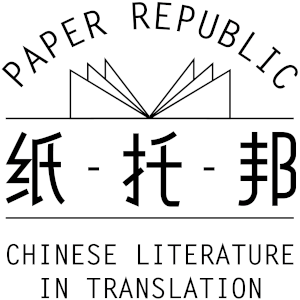Ann Morgan’s recent publication Reading the World: Confessions of a Literary Explorer devotes no fewer than five pages (pp.208-212) to the first translations of Sherlock Holmes into Chinese, the spoiler-titles (eg The Case of the Sapphire in the Belly of the Goose and The Case of the Jealous Woman Murdering Her Husband), and the Chinese gong’an (court case) tradition.
Morgan writes: “Rather than ‘whodunnit’, the central question is more likely ‘whaddyagonnadoaboudit’; a sentiment incidentally, which still seems to have a place in contemporary fiction such as Chinese-American author Yiyun Li’s Kinder Than Solitude, of which one reviewer wrote, ‘the whodunit is less mysterious than [the characters’] interconnected fates.”
Morgan draws largely on Eva Hung’s paper “Giving Texts a Context: Chinese Translations of Classical English Detective Stories 1896-1916” in David E. Pollard (ed.) Translation and Creation: Readings of Western Literature in Early Modern China (Amsterdam: John Benjamin’s Publishing, 1998)
Hung is not the only person to have researched Sherlock Holmes in Chinese. There was an interesting article published in 2014 by Karen Seago and Victoria Lei (“‘Looking East and Looking West’: Crime Genre Conventions and Tropes” in Comparative Critical Studies, Oct 2014, Vol.11, No.2-3, pp.315-335) in which the authors also look at how gong’an stories were adapted when translated into English - in particular at the translators’ treatment of women and supernatural elements – and at more recent developments both in Chinese and English contexts.
Seago and Lei conclude: “In tracing the development of central tropes and genre conventions of detective or crime fiction, it has become very clear that the perception that it was Western models which generated Chinese crime fiction is too simplistic. The translation of modern English and French stories very clearly had a decisive impact in shaping the genre in China. However, the Western detective story is a response to modernity as is the Chinese detective story, but in the Chinese case, modernity and exposure to Western ideas occurred at the same time and reinforced each other. The Chinese tradition follows a similar trajectory - with a slight delay - to the development of the genre in the West. Both English and Chinese have a tradition of pre-cursor crime narratives which share very similar narrative conventions. They are didactic, focus on punishment rather than suspense and denouement, have a central authority figure upholding the law, are often sensationalist and do not privilege the rational. In translation, whether from the West to the East or from the East to West, dominant conventions have tended to be reinforced, for example the treatment of the supernatural or the focus on suspense. How Chinese and Western authors and producers develop the central tropes of crime fiction shows a more hybrid and far less one-directional development, truly looking East and looking West. Ascari argues that ‘the supernatural plays a central role in postmodern crime fiction’. However, the function of the supernatural has changed substantially from pre-cursor crime narratives which used it as a means to solve crimes but where the focus was didactic; in the new developments, it is a ‘search for meaning’ how to live life rather than solve death.”


Comments
There are no comments yet.